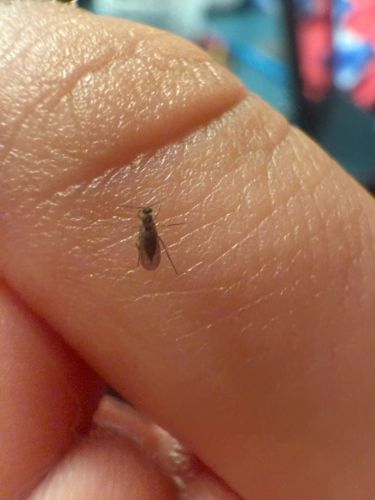Fungus Gnat
Scientific Name: Bradysia spp. (for Sciaridae) or various genera within Mycetophilidae
Order & Family: Order: Diptera, Family: Sciaridae or Mycetophilidae
Size: Typically 2-8 mm (0.08-0.31 inches) in length.

Natural Habitat
Commonly found in damp, organic-rich environments, such as potting soil of houseplants, greenhouses, and outdoor areas with decaying vegetation. They thrive in moist conditions.
Diet & Feeding
Adult fungus gnats primarily feed on fungi. Their larvae feed on fungi, decaying organic matter, and plant roots, especially in moist soil.
Behavior Patterns
Fungus gnats are typically attracted to light and moisture. Adult fungus gnats are often seen flying around house plants or sources of moisture. Their larvae live and feed in damp soil. Their life cycle lasts about 3-4 weeks from egg to adult.
Risks & Benefits
Potential risks include being a nuisance by flying around indoors. While adults are harmless, the larvae can damage plant roots, especially in seedlings and young plants, leading to wilting or stunted growth. They generally do not pose a direct health risk to humans or animals. As for benefits, they play a minor role in decomposition in their natural habitat.
Identified on: 8/23/2025